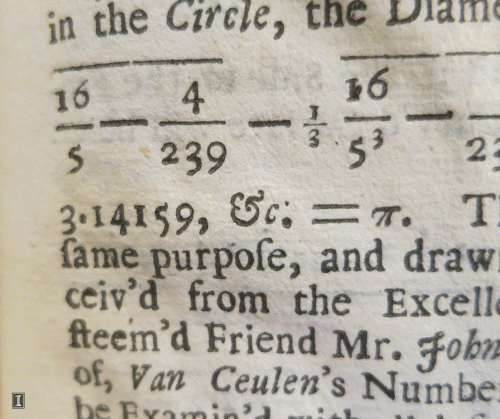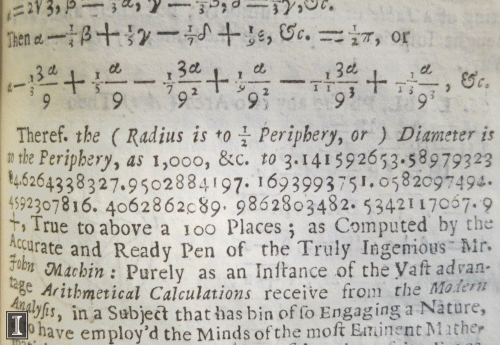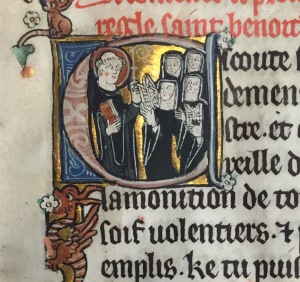

Humans have long known that a special relationship exists between the
diameter and circumference of a circle. As early as 2000 BCE, some had
even found numbers to represent this relationship. By this date, the
Babylonians knew that the circumference of a circle was always
approximately 3 1/8 times larger than its diameter, while the Egyptians
put the value at 4(8/9)2
Hindu astronomy books known as the Siddhantas tell us that by 380 CE the Hindus had arrived at 3
177/1250, or 3.1416, as a constant value for the circumference/diameter
ratio, and in the fifth century CE Chinese mathematicians determined
that the constant must be greater than 3.1415926 and less than 3.1415927.
The Mayas likely also knew of this ratio, and, given their sophisticated methods of calculation, had probably determined its value with a high degree of accuracy. However, it may be impossible to know for certain, as Diego de Landa, Bishop of Yucatan, burned most of the Mayas’ written records in the 1560s, believing that they were filled with “‘superstition and lies of the devil’.
The Mayas likely also knew of this ratio, and, given their sophisticated methods of calculation, had probably determined its value with a high degree of accuracy. However, it may be impossible to know for certain, as Diego de Landa, Bishop of Yucatan, burned most of the Mayas’ written records in the 1560s, believing that they were filled with “‘superstition and lies of the devil’.
Although knowledge of the constant ratio between a circle’s
circumference and its diameter—the ratio we now call “pi”—is ancient,
the use of the Greek letter “π” to represent it is not. Use of the π
symbol is usually dated to William Jones’ work Synopsis Palmariorum Matheseos: or, a New Introduction to the Mathematics,
published in 1706 and shown above (direct link to the book in that amazing resource called archive.org)
After spending some time in the Royal Navy as the mathematics master on a man-of-war, Jones worked as an itinerant teacher and then private tutor in London, and later edited and published editions of several of Isaac Newton’s works. His Synopsis Palmariorum Matheseos consists of two major sections, the first dealing with “Numeral and Literal Arithmetick” and the second with the “Principles of Geometry.”
Jones uses the π symbol several times throughout the second part, in both diagrams and equations. Although Jones is generally credited as the first to clearly set the letter π equal to the value 3.14 . . ., he may actually have borrowed this use of the π symbol from the writings of the astronomer John Machin, who had calculated π out to one hundred decimal places, and whose work Jones cites elsewhere in his Synopsis. Regardless of which man used the π symbol first, mathematicians adopted the symbol as standard only after the noted mathematician Euler used it in his writings, approximately thirty years after the publication of Jones’ work.
After spending some time in the Royal Navy as the mathematics master on a man-of-war, Jones worked as an itinerant teacher and then private tutor in London, and later edited and published editions of several of Isaac Newton’s works. His Synopsis Palmariorum Matheseos consists of two major sections, the first dealing with “Numeral and Literal Arithmetick” and the second with the “Principles of Geometry.”
Jones uses the π symbol several times throughout the second part, in both diagrams and equations. Although Jones is generally credited as the first to clearly set the letter π equal to the value 3.14 . . ., he may actually have borrowed this use of the π symbol from the writings of the astronomer John Machin, who had calculated π out to one hundred decimal places, and whose work Jones cites elsewhere in his Synopsis. Regardless of which man used the π symbol first, mathematicians adopted the symbol as standard only after the noted mathematician Euler used it in his writings, approximately thirty years after the publication of Jones’ work.
William Jones, Synopsis Palmariorum Matheseos: or, a New Introduction to the Mathematics. London: Printed by J. Matthews for J. Wale, 1706.
Selected Bibliography & Other sources
Arndt, Jörg, and Christoph Haenel. Pi –Unleashed. Trans. Catriona Lischka and David Lischka. Berlin: Springer, 2000. Print.
Beckmann, Petr. A History of Pi. 2nd ed. Boulder: Golem, 1971. Print. (Basically all historical references I mention on this post about the "PI" number for Babilonians, Hindus, Mayas, etc are deep/well explained on this book). Also available at amazon, see link here to buy for less than 15 USD
As usual, wikipedia for William Jones BIO; archive.org (this time the book is not high res and only B/W no color but...)
As usual, wikipedia for William Jones BIO; archive.org (this time the book is not high res and only B/W no color but...)
